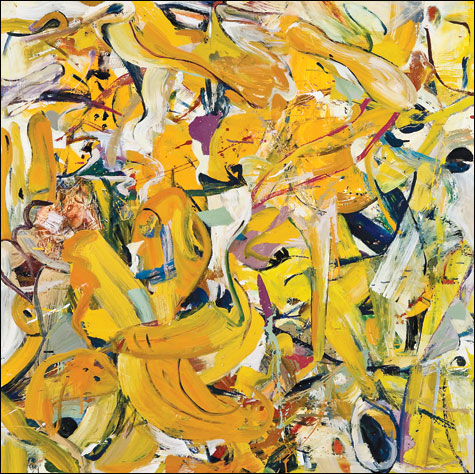
LILY Imber’s painting is right on the surface.
Let’s get something straight right at the outset. There is nothing inherently emotionally expressive about paint being loosely smooshed around on a canvas. Legendary citric Harold Rosenberg’s notion of “Action Painting” was a complete misreading of what came to be known as Abstract Expressionism, which is itself a misnomer. All painting methods are created equal; you either get a good painting at the end or you don’t.
These considerations surface when you consider the recent paintings by Jon Imber on view at Greenhut Galleries. Imber was deeply influenced by Philip Guston, a first-generation abstract expressionist who famously turned to cartoonish representational painting in the late 1960s, creating, with others, what came to be known as neo-expressionism (misnomers abound in the art business). Much of Imber’s work throughout his career has been in that vein — somewhat humorous figures doing odd things, often strenuously.In the past few years, Imber has made paintings that are abstract, or nearly so, and these are what he is showing at Greenhut. He has gone to very loose paint handling, with wide, active strokes, splatters, dots, and drawn lines — reversing Guston’s transition.
These are very strong paintings indeed. I’m not familiar enough with Imber’s career to have a sense of how these canvases hold up against his representational work, but with this collection, he demonstrates an accomplished ability to bring overall pictorial coherence to each of his paintings.
Lily, for example, contains just the slightest hint of representation. Its main theme is built around orange-yellow strokes of paint whose color and shape are a bit lily-like. These shapes populate the entire picture, interspersed with lines of red or black and occasional little areas of green or other colors. It reads chaotically, in the sense that there is no discernible pattern or illusion of light or depth. This is painting right on the surface, creating a consistent internal order that has very little specific reference. Even its ‘lily-ness’ seems to be a structural convenience, a point of departure from which Imber derives the picture’s own logic.
The pictorial logic of Beach is quite different. Here again there is a sense that a real place has supplied some of the colors and at least a starting position for how they are organized. There’s a comparatively large beige-pink area in the middle, a blue-green area above it, and a yellow smudge near the top, as might be seen at the seashore. Much of the picture is filled with painted lines and squiggles, as if Imber had laid in a few basic shapes and then spent the rest of his time with it in free improvisation. He makes it look as if it just happened to come out that way, as if he went to the beach, tossed something off and here it is, with chance, or luck, making it hold together the way it does.
No one is that lucky, and good paintings don’t make themselves. As with jazz, there may not be specific rules for improvisation, but there are reasons why things are where they are. Imber has had a long apprenticeship as a painter, and he has the work of previous generations to draw on, from Guston himself, and from Kandinsky, deKooning, Pollock, Kline and others. A feeling of spontaneity in a painting doesn’t just happen. It requires the right basic circumstances at the start plus the ability to understand what one has already done and what needs to be done next.
This is, I think, what Imber has accomplished with these works. The result is a show of paintings that are beautiful, coherent and emotionally resonant.
Ken Greenleaf can be reached atken.greenleaf@gmail.com.